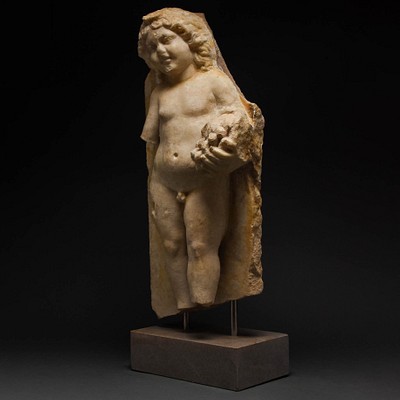VIKING IRON SPANGENHELM IRON HELMET
Lot 266
Categories
Estimate:
GBP£4,000 - GBP£8,000
$5,128.21 - $10,256.41
Absentee vs Live bid
Two ways to bid:
- Leave a max absentee bid and the platform will bid on your behalf up to your maximum bid during the live auction.
- Bid live during the auction and your bids will be submitted real-time to the auctioneer.
Bid Increments
| Price | Bid Increment |
|---|---|
| GBP£0 | GBP£10 |
| GBP£100 | GBP£10 |
| GBP£200 | GBP£20 |
| GBP£500 | GBP£50 |
| GBP£1,000 | GBP£100 |
| GBP£2,000 | GBP£200 |
| GBP£5,000 | GBP£500 |
| GBP£10,000 | GBP£1,000 |
| GBP£20,000 | GBP£2,000 |
| GBP£50,000 | GBP£5,000 |
| GBP£100,000 | GBP£10,000 |
| GBP£200,000 | GBP£20,000 |
| GBP£1,000,000 | GBP£50,000 |
About Auction
By Apollo Art Auctions
Mar 27, 2022
Set Reminder
2022-03-27 08:00:00
2022-03-27 08:00:00
America/New_York
Bidsquare
Bidsquare : Ancient, Chinese and Islamic Art
https://www.bidsquare.com/auctions/apollo-art-auctions/ancient-chinese-and-islamic-art-8938
Apollo Galleries and Auctions is delighted to present a stunning March 2022 Ancient, Chinese and Islamic Art Auction. The sale is divided into four sections and features items from Christie’s, Bonham’s, Alison Barker, John Lee and other famous collections. Apollo Art Auctions enquiries@apolloauctions.com
Apollo Galleries and Auctions is delighted to present a stunning March 2022 Ancient, Chinese and Islamic Art Auction. The sale is divided into four sections and features items from Christie’s, Bonham’s, Alison Barker, John Lee and other famous collections. Apollo Art Auctions enquiries@apolloauctions.com
- Lot Description
Circa 900-1000 AD Rare Viking period iron helmet; of elongated form in triangular sections; attached with iron rivets passing through this overlap to secure them in position; the rivets worked flat into the surface of the helmet, almost invisible from the outside but detectable on the inner surface; the inverted lower rim furnished with an additional series of rivets, probably to accommodate a lining; the plate-junction at the apex with loop, allowing a plume or horsehair streamer to be inserted, or a conical covering plate to be attached. Reference: Curtis, H. M., 2,500 Years of European Helmets, North Hollywood, 1978; Denny, N. & Filmer-Sankey, J., The Bayeux Tapestry, London, 1966; Kirpicnikow, A. N., Russische Helme aus dem Frahen Mittelalter Waffen- und Kostamkunde, 3rd Series, Vol. 15, pt. 2, 1973; Menghin, W. The Merovingian Period - Europe Without Borders, Berlin, 2007, p.326-7, item I.34.4. The item has undergone X-ray fluorescence analysis to confirm the metallurgical content suggesting its ancient origin and lack of modern trace elements. Size: L:235mm / W:200mm; 800g Provenance: Allegedly found in 1942 in Germany. Brought to England in 1945. Various English private collections. In last collection until 2018, when bought by the current owner.
- Shipping Info
-
We offer in-house packing and international shipping at discounted rates.
-
- Buyer's Premium



 EUR
EUR CAD
CAD AUD
AUD GBP
GBP MXN
MXN HKD
HKD CNY
CNY MYR
MYR SEK
SEK SGD
SGD CHF
CHF THB
THB


















